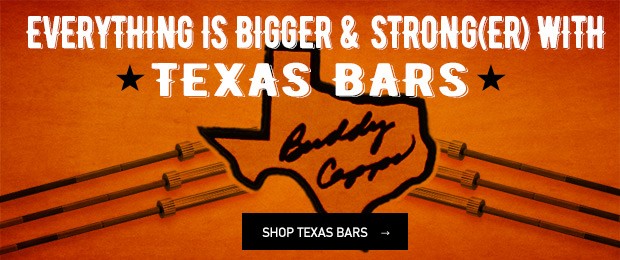Originally Published in 2011
How long is a piece of string? We all know that if you have long arms and a short torso, you should pull conventional. If you have a long torso and short arms, sumo suits your anatomy better. But how do you tell whether your arms or torso are short or long? With some people, it’s just not as obvious as with Lamar Gant.
A recent article by Dr. Michael Hales published in the Strength and Conditioning Journal quantified what a “short” torso is and how long your arms need to be before you could call them “long.” In this article, I’ve simplified the research for you so that you can measure your own arms and torso to decide whether you are better suited to deadlift conventional or sumo.
You will need a tape measure and a friend to help you measure your height, arm length, and torso length. Directly comparing your arm length to the arm of someone who is 5’10” won’t mean anything unless you’re 5’10” as well, so you'll need to get your calculator out. You will need to express your arm and torso lengths as a proportion of your height, which is math talk for divide your arm length by your height and your torso length by your height. So if you’re 5’10” (70”) and your torso is 35” long, your torso is 50 percent of your height. This percentage can be used for comparison.
- Your torso is measured from the bony prominence on the side of your thigh at the top (greater trochanter for all the anatomy geeks) to the top of your head vertically.
- Your arm is measured from the bony part of the top of your shoulder (proxy for the head of the humerus) to the middle finger with your arm held out straight.
- Your height is taken barefoot standing up against a wall.
Now that you’ve taken your measurements and have done your calculations, you can use the following table to find out if your arms and torso are short, average, or long.
Table 1: Torso and arm lengths expressed as proportions of height
Now that you know how long your arms and torso are, you can use the following table to see whether you should be pulling conventional or sumo.
Table 2: Recommendations based on relative lengths of torso and arms
Using that information, if you have short arms relative to your torso, you are better suited to adopting a sumo stance when deadlifting. If you have long arms relative to your torso, you will probably find conventional deadlifts easier. And if your arm length matches your torso length, you can get away with both styles, so you should experiment with both to see which works better for you.
That being said, we aren't just made up of bones. Strength and flexibility also affect which deadlifting style will add more to your total. The conventional deadlift is better for those with strong glutes, hamstrings, and lower back muscles. Pulling sumo uses the quads and adductors to a greater extent than conventional but also requires above average adductor flexibility.
So what’s the moral of the story?
If you’re a beginner and you aren't sure which style will work better for your bone structure, use the information above to decide. If you’re a more advanced lifter and your preferred pulling style doesn’t match up with the recommendations above, maybe you’ve developed your strength and flexibility to counter the influence of your structure. Or maybe you have untapped potential in deadlifting in the style your bones were designed for.
If you do decide to change your lifting style, you probably won’t see the benefits immediately. Think back to how long it took you to perfect your technique. Perfecting the new style will take time, but you’ll be making the best of what you’ve been given, not going against it.
RELATED: The Hybrid Deadlift Stance
On a practical note, if you’ve been pulling conventional and you decide to try sumo because you’re better built for it, you shouldn’t just drop conventional altogether, especially if you plan on competing while you’re developing your sumo deadlift. You should train them in parallel. One good way to do this is to perform your warm-up sets with both or warm up to a work set with sumo and then continue your work set(s) with conventional. Obviously, the same applies when going from sumo to conventional.
Author Note: In the published version of the article, the information regarding how to take measurements doesn’t match the table of proportions used to make recommendations. The information I presented in this article has been updated with correct information from personal communication with Dr. Hales and with his permission to do so.
References
- Hales M (2010) Improving the Deadlift: Understanding Biomechanical Constraints and Physiological Adaptations to Resistance Exercise. Strength and Conditioning Journal 32(4):44–51.
You will need a tape measure.











